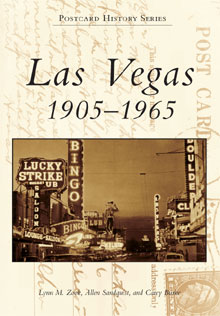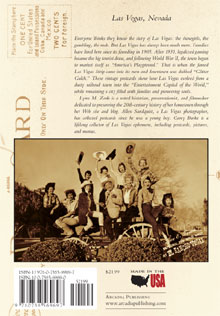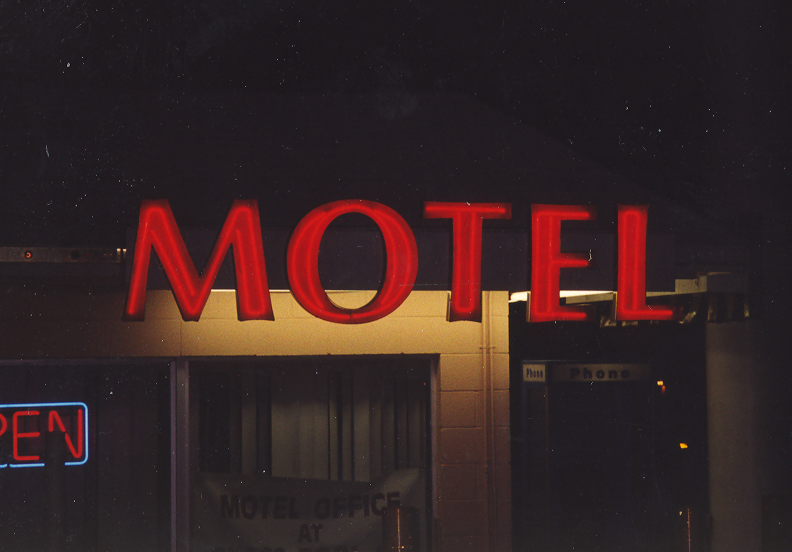My family moved into Charleston Heights in April of 1964. Up till then, we had been living in a small rental house in North Town, just off the old Salt Lake Highway (Las Vegas Blvd. North).
But, with my mom pregnant with my little brother, she and dad decided that we needed a big home. Sproul was a popular builder of homes back then, especially in the west end of town. Our house sat at the end of Bristol Street and the surrounding streets were named Bourbon, Brandwine, Burgundy and Evergreen. It was what was called a 988er meaning it had 988 square feet. That included three bedrooms, one and three-quarter baths, a living room, kitchen, as well as the single car garage.
It cost $16, 450 and that was a lot of money in 1964. The elementary school was brand new and located on Torrey Pines, Rose Warren. It was so new that grass had yet to be planted on the school yard and the jungle gym equipment was amid rock and gravel (and would be that way for a few more years).
I transferred from Quannah S. McCall to Rose Warren just before the end of second grade. The kids in the class all lived in the neighborhood and I can still drive those streets and point out where they lived.
Sproul Homes built almost all single story planned houses. They did have one tri-level plan with the rumpus room/sewing room downstairs. According to my mother, most homes were frame and asbestos siding with either a composition shingle roof or a tropical roof.
They ranged in price. The smallest home had two bedrooms, one bath and a swamp cooler. It sold for $14,900. The other models came with air-conditioning. The tri-level sold for $19,950 and had 1650 square feet along with the single car garage.
Many of the models were named after Indian tribes such as the Aprapho. There was one territorial style model as well.
The neighborhood stretched from Charleston and Torrey Pines to just west of Alta across from Garside Jr. High and from just west of Torrey Pines down to Decatur. Along Decatur, the boundary went all the way to Washington Blvd.
We were literally the last house on Bristol and after us it was desert all the way to Calico Basin, except for a small bar about half way between us and Red Rock Canyon.
Today it is all housing. There used to be a large expanse of desert on the other side of Alta between and Garside and that is all housing now.
We lived there until 1973 when we moved to a bit further to the Southwest to Spring Valley.
Charleston Rainbow subdivision was built in the late 1960s and the large earthen berm that had served as flood control was finally torn down. About that same time, more houses were added to our street and the surrounding streets as well.
You can drive through the neighborhood and chart the changes in the designs.
Our neighborhood was quite diverse. We had a large family as our next door neighbors for many years. It was mainly a family of girls and they introduced me to the Beatles and we introduced them to Elvis. When they moved a Mormon family took their place.
Across the street was the Delahuerta family and two doors down from them the Mendoza family. In between was a couple who, like my parents, worked in the hotels.
It was while we were living in Charleston Heights that my dad gave up working on Fremont Street and went to work at the Titanium Factory in Henderson. He bought a motorcycle for the commute.
As with generations past, you could hear us playing in the twilight during the summer months and as it got dark you would hear the mom's calling their kids to come in.
We rode our bikes all over the sub-division and all over the desert. The ice-cream truck, with soft-serve ice cream, came through the neighborhood every evening.
Anderson Diary delivered fresh milk to our door a couple of times a week. There was a bakery truck for awhile that delivered fresh bread from the Holsum Bakery on East Charleston.
It was a different time and place than the neighborhoods today but then, Las Vegas is no longer just a small city in the sun-belt either. Though I've grown up and moved away, I can still drive around the neighborhood and hear us out there playing "Red Rover" and hide and seek in the twilight of the evening.
Charleston Heights - A Look Back














